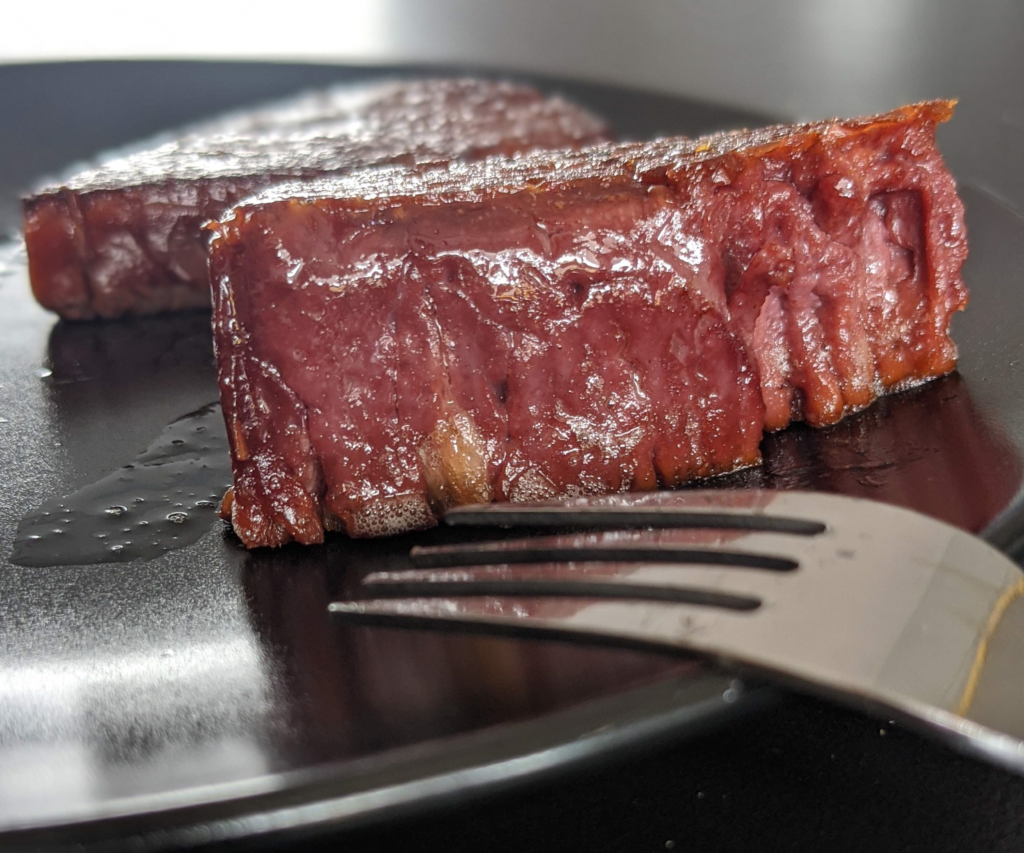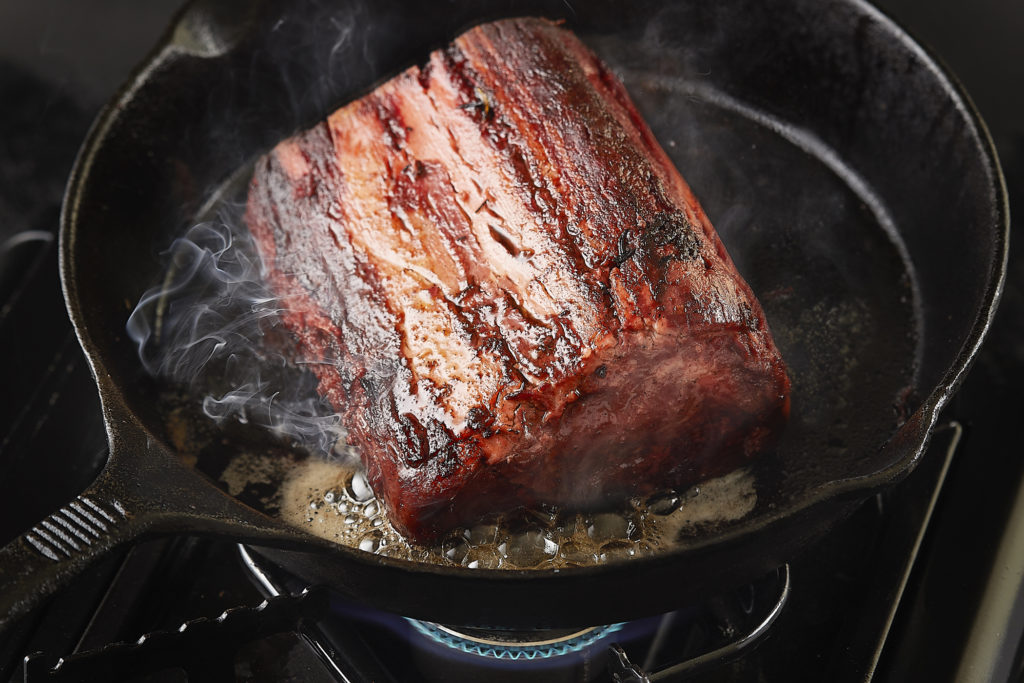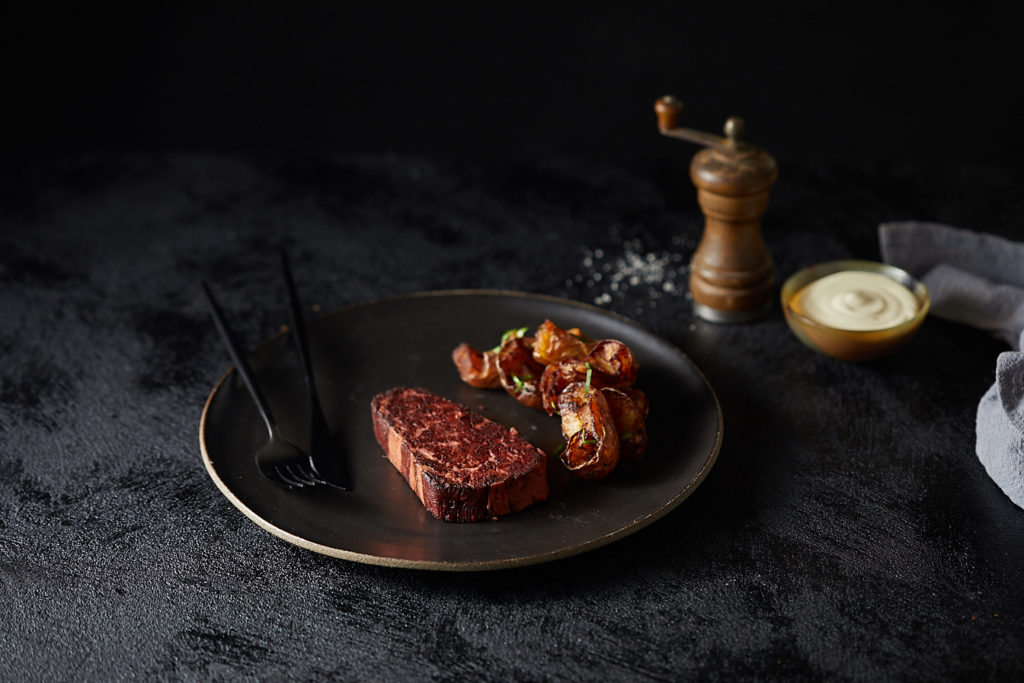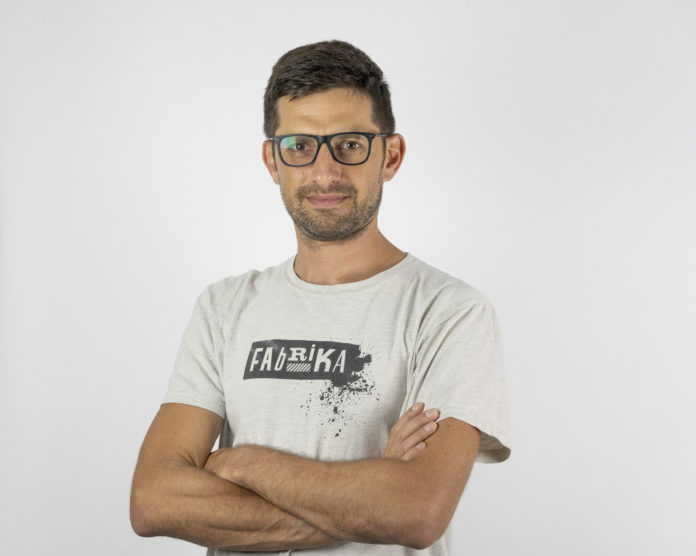Interest in alternative meat has grown exponentially in recent years. However, the lack of products tasty enough to convert the majority of meat lovers still prohibits the industry from truly taking off and driving any meaningful change in global meat consumption. In the following Q&A, Daniel Dikovsky, Head of Innovation and Technology at Redefine Meat, discusses how the inherent advantages of 3D printing make it a compelling proposition for solving some of the most complex challenges in replicating animal meat. Having spent over a decade leading the development of multi-material 3D printing at Stratasys, Daniel also lifts the lid on ‘multi-material food printing’ – key to cracking the challenge of replicating beef steak.
What are the biggest challenges in replicating animal meat?
The ability to replicate the taste, texture and appearance of animal meat has long been sought after by the alternative meat industry and is a milestone that has still not been fully achieved. To effectively replicate animal meat means firstly understanding what it is exactly that makes meat, ‘meat’, such as the composition and behaviours of animal muscle structure, as well as the muscle structure’s function in terms of texture, flavour and mouthfeel.
Having evolved over millions of years through evolution and agricultural sciences, the structure of meat is highly sophisticated and intricate in its composition. This complexity is apparent in many forms – in the raw status of meat, the transition during cooking, and finally, during the complex sensorial process that takes place in our mouths when we eat meat. All these elements together deliver an experience that is not only tasty and enjoyable, but one that is truly unique to meat.
This challenge is especially notable with steak and other types of meat, and the very reason why it has been virtually untouched by the alternative meat industry to date, with products instead focusing on replicating minced meat. In products like hamburgers or sausages, a butcher or meat processor destroys the original complexity of meat and simplifies things. Instead of structure, interactions and complexity, we have homogeneity. In other words, everything averages out and instead of muscle we have mass. The list of attributes that are necessary to create a ‘perfect steak’ is far more extensive than a hamburger: stiffness, fiber structure, cohesiveness, color gradient, heterogeneric structure, changes in heat, smell, flavour and many more. There are so many parameters that we as humans do not know how to quantify or articulate, but when we bite into our favourite cut of steak, we definitely feel them.
In the past few years, we have seen the emergence of 3D printing as a potential solution. Why is that?
Tackling this challenge requires a new approach when it comes to alternative meat – embracing complexity, not avoiding it. While developments are being made in several areas, the inherent attributes of 3D printing make it such a compelling proposition for alternative meat production. Crucial to this is 3D printing’s ability to create complex geometries unachievable with traditional methods. When parts are built layer by layer, there are virtually no limits on how complex the part can be, and it is the same for recreating meat structure. 3D printing enables the precise composition of meat layer by layer to bring every fiber of real meat to fruition in a way that conventional alternative processes cannot.

| Accurately replicating the complex muscle structure of animal meat is key to creating alternative steak products desired by meat lovers. Above is Redefine Meat’s Alt-SteakTM produced using multi-material food printing |
However, in recent years, we’ve seen the introduction of new multi-material 3D printing technologies that take this freedom of design to the next level – and it’s perhaps here that lies the greatest potential for alternative meat production in replicating the complex muscle structures of animal meat. Especially when tackling steak, in contrast to existing alternative meat processes used today to only make plant-based minced meat products, such as burgers.
What is it about multi-material 3D printing in particular that offers so much potential for replicating animal muscle structure?
Multi-material 3D printing provides users the unique capability to create products comprising multiple different materials all in a single process. If you take a pair of sunglasses for example, today manufacturers are 3D printing the rigid frame, the interior rubber lining to sit on the ears, and the transparent lenses simultaneously in one print – something previously unimaginable.
For Redefine Meat, we’re applying a similar approach to multi-material food printing (MMFP) and its been integral to cracking the compositional challenge of steak. Designed especially for alternative meat, the Redefine Meat 3D printer lays down blood, fat and protein simultaneously at a voxel-level according to the digital structure of animal meat. Furthermore, these ingredients can also be precisely combined on-the-fly during the printing process itself to create entirely new digital materials designed to replicate a specific animal composite. This advanced capability is what allows an alternative-steak to go beyond just taste, but also replicate texture and mouthfeel. After all, this is the same approach that is being used today to try and mimic human tissue in bioprinting, so why not extend this capability to replicate a much simpler target.

| Multi-material food printing allows meat producers to create a diverse range of steaks and whole muscle cuts – such as tenderloin, rib-eye or sirloin – by simply changing the digital file |
Additionally, MMFP enables alternative meat producers to address the current lack of product variety witnessed today. Using the same 3D printer, companies can print different meat types (e.g. beef, pork or lamb) and different meat cuts (tenderloin, sirloin, rib-eye etc.) by simply changing the digital file. This level of flexibility in production helps alternative meat producers to provide the same variety of products, cooking methods and culinary applications we would expect from a traditional meat aisle or restaurant.
What are the benefits of digitizing alternative meat production compared to traditional methods?
As with any development process, the ability to test and iterate designs quickly can very much determine the speed at which the final desired product can be achieved. While traditional food production processes, such as extrusion, enable alternative meat producers to modify ingredients and test new formulations during product development, it requires a large quantity of material and long production cycles to test each new formulation. Modifying the structural composition of meat using these analog processes is even more challenging – heavy machinery needs to be reconfigured, a step that can take days or even weeks, and is often a very costly process. These are inherent barriers within alternative meat that naturally slow down developmental breakthroughs in achieving the structure and texture of the final product.
MMFP, however, brings the benefits of rapid prototyping and digital production to the meat industry. The foundation of 3D printed meat is based upon digital building blocks that are precisely allocated and assembled during the printing process, which crucially enables engineers to actually manipulate the meat’s structure and texture. During the development phase, new design iterations to the meat’s structure can be made digitally via software within minutes, and several new sample ‘meat prototypes’ with different structural parameters can be printed and compared almost immediately. This process of ‘print, sample, repeat’ offers unprecedented speed in product development and a significant competitive advantage in tackling the complexity of replicating animal meat structure – especially when cracking steak.
This approach also opens the door to advanced AI & machine learning technologies that can further optimize the alternative meat experience for consumers. With the ability to learn consumer habits, likes, dislikes and more, these learnings can be fed through into development and refinement of meat production – further enhancing the product to consumer requirements. For example, if consumer feedback data suggests the meat is too fatty, digital files can be optimized using computational methods to re-structure the distribution of fat to address the issue.
What still needs to happen for alternative meat to truly disrupt the traditional meat market?

| The benefits of rapid prototyping and digital production provides unprecedented speed in alternative meat development – key to cracking the holy-grail of beef steak |
While 3D printing’s inherent attributes offer a compelling proposition for alternative meat, there’s still a long way to go if the industry is to truly take animal meat head on. If we are to convince mass meat lovers to embrace Alt-Meat and reduce their animal meat intake, the complex composition of animal muscle still needs to be truly replicated. While it is clear that new innovations are required at a technology and process level to achieve this, understanding the fundamentals of what makes meat, ‘meat’ will be critical throughout this journey.
Remember, you can post free of charge job opportunities in the AM Industry on 3D ADEPT Media or look for a job via our job board. Make sure to follow us on our social networks and subscribe to our weekly newsletter : Facebook, Twitter, LinkedIn & Instagram ! If you want to be featured in the next issue of our digital magazine or if you hear a story that needs to be heard, make sure to send it to contact@3dadept.com






